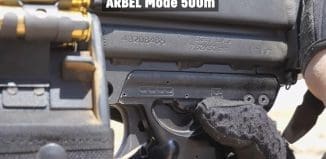Commercial Technologies to Help Military Amphibious Operations
This post is also available in:  עברית (Hebrew)
עברית (Hebrew)
Autonomous vehicles, augmented reality systems, and advanced wireless networks were among over 50 new technologies showcased during a recent US military amphibious operations exercise. New avenues across five areas of amphibious beach landing operations were the focus of interest of experts from industry, academia and the Naval Research and Development Establishment.
Aligning the requirements of military operators with the technological innovation emerging from industry can be a challenge. As budget pressures and the pace of technology development have increased in the commercial sector, today tailored off-the-shelf solutions meet the majority of army requirements. Not only does this see new technologies acquired more quickly and at a lower price point, it allows military customers to divest more of the risk associated with the development of new technologies.
According to navaltechnology.com, in order for this to work, armed forces must work more closely with the commercial sector, keeping industry abreast of how it sees its equipment requirements developing over the coming years, and keeping up-to-date with the types of technologies being worked on in the private sector.
Organisations like the US military increasingly use industry days or exercises to do this, inviting participants to bring their newest or prototype wares and put them through their paces within the scope of specific operational areas.
An exercise held in May brought together various technologies in a series of amphibious beach landings at Marine Corps Base Camp Pendleton. Emerging technology innovations were demonstrated across five areas of operations in which the amphibious US forces are looking to improve their capabilities: ship-to-shore manoeuvre; weapons fire support and effects; clearing assault lanes; command and control; and information warfare.
Unmanned technologies – unmanned vehicles equipped with sensors as situational awareness scouts were sent to shore ahead of landing parties to gather information on the area and feed accurate details back to commanders, providing a live situational awareness picture for battle planning and force manoeuvre purposes.
A number of systems were tested in this sphere, including the Mine Warfare Rapid Assessment Capability (MIW RAC). This system is a 1lb quadcopter outfitted with an ultra-sensitive magnetometer sensor system to detect mines and provide real-time search data to a handheld Android device. The idea is for the UAS to be sent ahead of marines approaching the beach to quickly detect and locate mines and other hazards such as dangerous metal obstacles within coastal surf zones and very-shallow-water zones well before a dismounted marine or vehicle reaches the area.
A larger unmanned helicopter system, the Vapor 55, was also operated during the exercise, serving as a surveillance asset and information conduit to relay data gathered by other platforms, including unmanned underwater vehicles, back to operators on land. This networking capability for unmanned air and maritime vehicles is the critical next step in enabling unmanned technologies, which are already making their mark in the maritime domain, to move to the next level and allow operators to fully exploit their force multiplication capabilities.
A surveillance tool originally developed for combating piracy and illegal activities in the world’s oceans, the Coalition Tactical Awareness and Response (CTAR) system, was also put to the test.
In this way, such exercises may also help steer the way for the US Navy and Marine Corps when it comes to prototyping the identification of those technologies that should be fast-tracked for rapid development.
The US military is no longer looking to go back to the drawing board every time it is looking for new kit. Exercises like this reflect the modern, collaborative methods being used to tap into industry advances and get new technology into the hands of the warfighter faster, to the benefit of both parties.






























